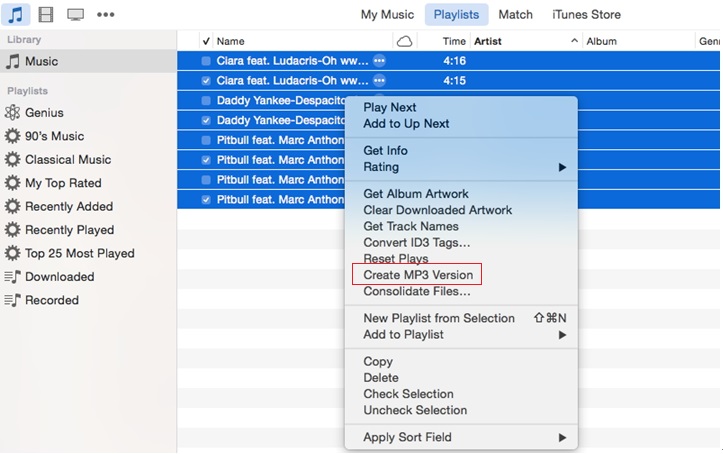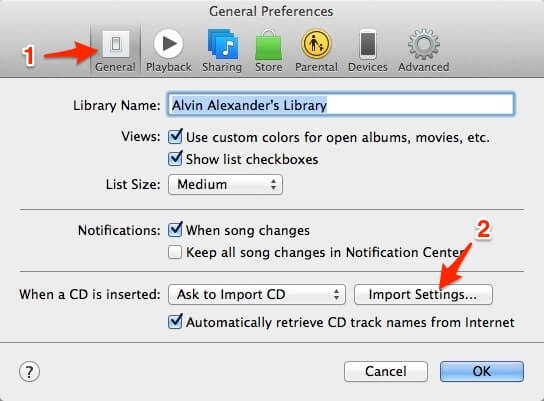


because as far as i know for iTunes encoding, it is only seen on purchased music, is it possible for others besides iTunes like a record company who made the CD to encode with iTunes. so is this encoding some sort of issue or glitch or is it harmless. most of my music is purchased from iTunes but a small portion of it is from CD. the other 2 formats i listed are found on some of the albums from CDs in my library. the purchased songs are encoded with iTunes and some of the other albums from CDs are also encoded with iTunes. not all my songs are encoded with something. What does it mean if something is encoded with iTunes but not purchased from iTunes, did someone manually out this on and are these different forms of encoding an issue for me.

One is encoded with something called:Fraunhofer IIS MP3 v04.01.02 (high quality)Īnd some of them are encoded with iTunes but they are not purchased from iTunes To get the best possible sound out of your new chosen format, rerip the CD again with your adjusted settings.I have a few songs in my iTunes libraries that are from ads and some of them are encoded with a bunch of different forms of encoding. But while this will quickly convert the song, it’s often not the best thing for maintaining audio quality, especially when converting between lossless formats like MP3 and AAC. Click the track you want to change and choose Advanced → Convert Selection in iTunes. Once you change your encoding preferences, you can use iTunes to quickly convert a track into the format you’ve just chosen. To make this kind of change, choose iTunes → Preferences on the Mac (Edit → Preferences in Windows) and click the Importing tab (see Figure 4-3). On the other hand, if you’re listening to garage rock while strolling city streets, 96 Kbps may sound fine-giving you plenty of room on the iPod. If you’re a classical music fan and want to hear every nuance of a symphony, go for 160 or even 192 Kbps. You’re not stuck with the 128 Kbps rate for your own home-ripped tracks. (Songs for sale in the iTunes music store are 128 Kbps AAC files, too.) The 128 Kbps rate is considered high quality for the AAC format, which is why iTunes comes factory set to 128 Kbps. At that rate, MP3 files take up roughly one megabyte of space per minute of music. 700 KB).įor MP3s, most people find that 128 Kbps is a good compromise of file size and sound quality. For example, an MP3 file encoded at 160 Kbps sounds a heck of a lot better than one recorded at 96-but it takes up over twice as much disk space (1.5 MB vs. You probably don’t want to encode AAC files lower than 128 Kbps, though, as the sound quality will begin to suffer noticeably.įor both formats, the higher the bit rate, the larger the file size. (Your ears may differ.) As a bonus, the AAC version takes up much less space on your hard disk and iPod. In fact, tests by the group that developed the AAC standard found that a 96 Kbps AAC file generally sounds better than a 128 Kbps MP3 file. A 128 Kbps AAC file generally sounds much better than a 128 Kbps MP3 file. Pentium 4), you can’t compare bit rates between AAC and MP3 files. Just as you can’t compare megahertz ratings across different chip families (like Pentium III vs. They sound thin and tinny compared to a file encoded at, say, 160 Kbps. When you encode an MP3 file, the transfer and compression of the audio data into the new format is measured in kilobits.įiles encoded with lower bit rate settings-like 64 kilobits per second-don’t include as much audio information from the original sound file. Geeks measure size and storage capacity in bytes, but network speeds and data-transfer speeds have always been measured in bits. So why are audio files measured in kilo bits (thousands of bits) and not the more familiar kilo bytes?įorce of habit.


 0 kommentar(er)
0 kommentar(er)
